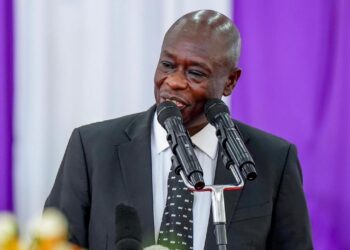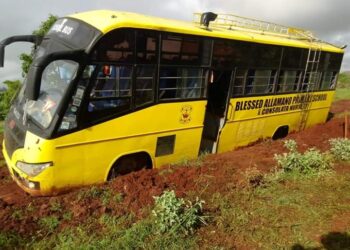The Kenya World Bank loan holds 11 conditions in 2025. Keeps the Sh97 billion lifeline in limbo as the global lender demands sweeping reforms to unlock funds aimed at boosting economic resilience.
In a November 12 update from Washington, the World Bank reiterated its stance, tying disbursement to compliance with 11 benchmarks that target governance gaps, fiscal transparency, and sustainable growth.
The delay, now stretching into its third month since the July agreement, shows tensions between Kenya’s ambitious borrowing plans and international scrutiny, with Treasury CS John Mbadi confirming ongoing talks but no immediate breakthroughs.
As Nairobi grapples with a Sh12.1 trillion debt burden and 5.6 per cent growth forecasts, these hurdles could ripple into delayed infrastructure projects and strained social programmes.
The central account stipulation tops the list, mandating all government revenues and expenditures flow through a single hub at the Central Bank of Kenya.
This move, inspired by successful models in Rwanda and Uganda, aims to curb leakages from fragmented banking setups that have long fuelled off-book spending scandals.
“Scattered funds breed shadows; centralisation brings sunlight,” a World Bank official noted in a leaked memo obtained by Business Daily, estimating it could save Sh50 billion annually in administrative waste.
E-procurement emerges as a cornerstone, requiring all public buys to route through a digital platform that logs bids, tracks vendors, and flags anomalies in real time.
Kenya’s fledgling Integrated Financial Management Information System (IFMIS) would get a turbocharge here, slashing corruption risks in a sector notorious for ghost suppliers.
Early pilots in counties like Mombasa have shown 20 per cent cost cuts, but scaling nationwide demands tech upgrades and training for 10,000 procurement officers.
Market dominance curbs follow, pushing for antitrust laws that rein in monopolies in telecoms, banking, and retail giants like Safaricom or Equity.
The Competition Authority would gain teeth to probe unfair pricing, fostering fair play in a market where 60 per cent of sectors are oligopolised, per KIPPRA data.
This aligns with Kenya’s Vision 2030 push for inclusive growth, potentially unlocking Sh100 billion in SME investments.
Conflict of interest reforms hit close to home, enforcing the Public Officer Ethics Act to bar officials from moonlighting in firms they regulate.
High-profile cases, like the 2020 Arror dam probe, highlight the need, with the World Bank eyeing mandatory disclosures to deter cronyism that drains Sh200 billion yearly.
Social protection gets a lifeline too, with the Social Assistance Act mandating efficient cash transfers to 2 million vulnerable households via digitised registries.
This builds on the Inua Jamii programme, aiming to cut fraud in a system serving 1.5 million orphans and elderly, ensuring aid reaches the intended amid 36 per cent poverty rates.
Insolvency tweaks under the 2015 Act would streamline bankruptcies, allowing firms to restructure debts without total collapse, a boon for startups facing 40 per cent failure rates.
Financial safeguards for e-procurement would layer in audits and AI monitoring to prevent hacks, vital as Kenya digitises Sh1 trillion in annual spending.
Public-private partnerships (PPPs) face revamped rules for crystal-clear contracts, addressing flops like the stalled Galana Kulalu irrigation.
Urban transport policies target Nairobi’s gridlock hell, promoting rail expansions like the Sh300 billion SGR extension to reduce commute times by 30 per cent and cut emissions.
SACCO governance upgrades via the SACCO Societies Act would impose board rotations and audits, safeguarding Sh500 billion in member savings from mismanagement scandals.
Finally, borrowing ties to ESG goals, linking loans to green benchmarks like reforestation, and aligning with Kenya’s net-zero 2050 pledge.
As Mbadi jets to Washington for crunch talks, Kenya’s World Bank loan holds 11 conditions, and 2025 tests the Ruto administration’s reform mettle.
Compliance could inject fiscal oxygen by Q1 2026, but delays risk credit rating downgrades. For a nation balancing ambition and austerity, these 11 steps aren’t hurdles; they’re the hard yards to a steadier tomorrow.














